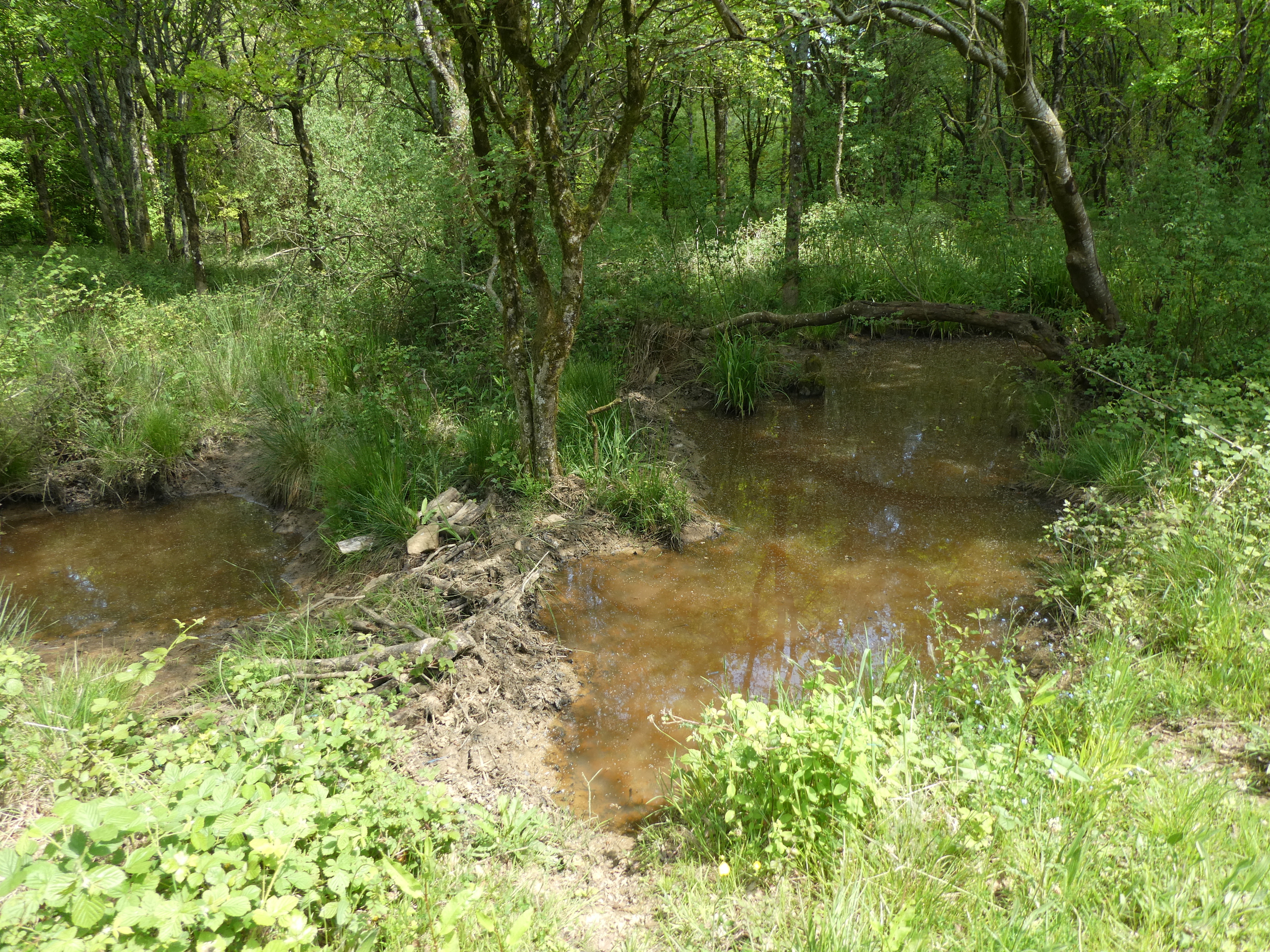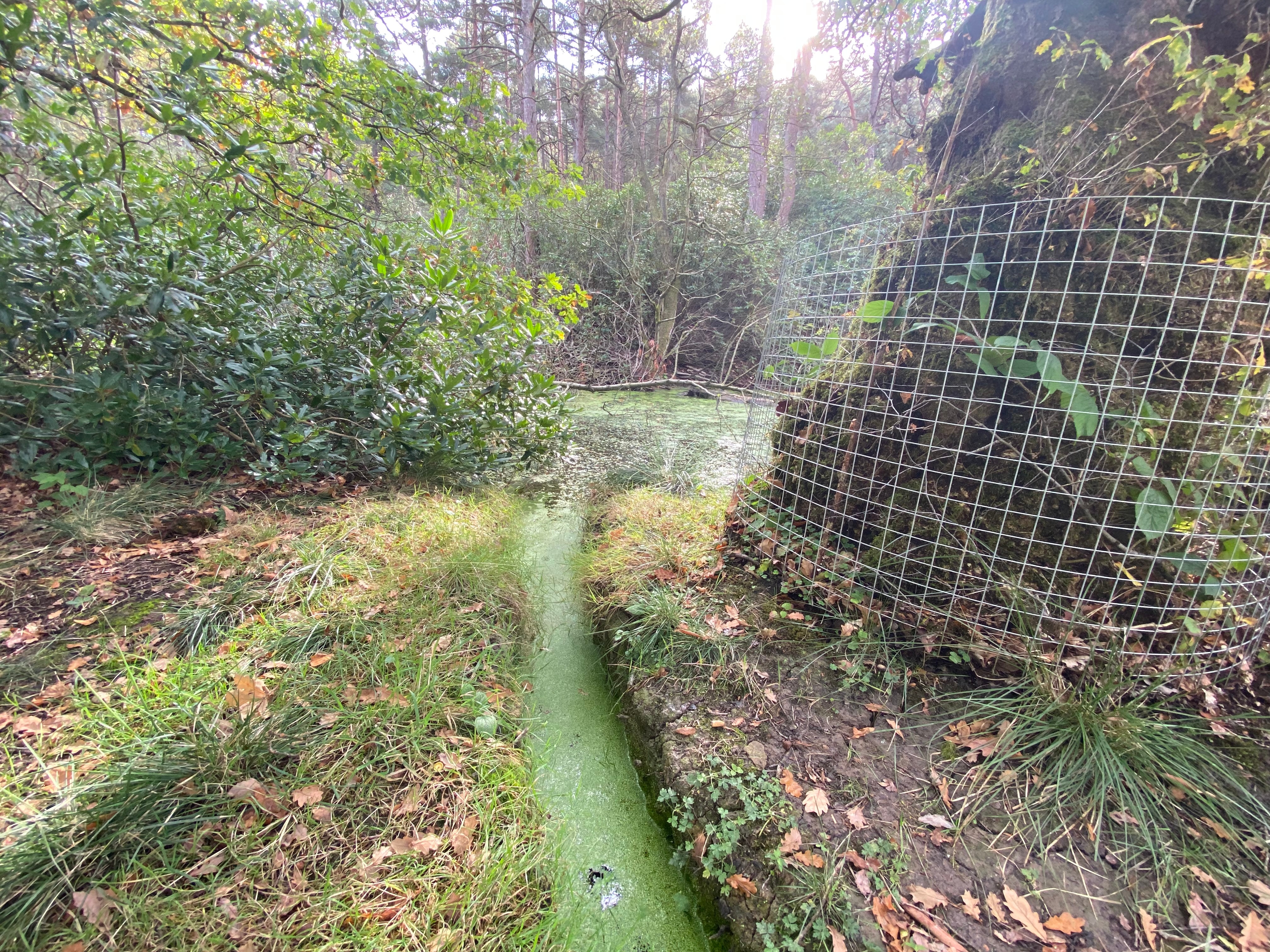June 2023
All photos of beaver-created habitat (dam above and wetland and channel to the right) are credited to Alastair Driver
Back in 1987, whilst in my idyllic role as the first Conservation Officer for the Thames catchment, I received a good old-fashioned handwritten letter. It was sent on behalf of an anonymous funder, asking for my views on the potential reintroduction of the Eurasian Beaver Castor fiber to the Thames. I politely replied suggesting that in ecological terms Scotland would be the most suitable place to start in the UK and that we would all watch with interest. Talk of Beavers in the UK then fell mostly silent for about 15 years, until animals started escaping from enclosures in Scotland in the early 2000s (leading to the wild Scottish population of c1500 animals today) and a 5-year trial release began in Knapdale in 2009.
From that point onwards, environmental organisations and universities have steadily been gathering scientific data on their positive and negative impacts. Bolstered by irresistible evidence that the net benefits are overwhelmingly positive, from creating habitat for other species to helping to tackle the climate emergency, momentum for releases to the wild has increased dramatically.
We now know, for example, that the actions of a pair of Eurasian Beavers in the Boldventure enclosure in Devon reduced nitrogen levels in the watercourse running off from upstream farmland by 35% and phosphate levels by 80%. We also know that in 5 years, they trapped 71 tons of sediment runoff from the farmland and reduced peak flood discharges downstream during storm events by 30%. And we know that Common Frogspawn clump counts increased from 10 clumps to 521 clumps in the first four years of the project due to Beavers creating 13 new ponds in the enclosure.
This is just the tip of the Beaverberg. There is a mounting pile of peer-reviewed evidence from across the world, revealing the extraordinary contribution that Beavers make to the creation of resilient nature-rich river and wetland ecosystems. From a human perspective, it is also now clear that their benefits to us as a species hugely outweigh the negatives. We also know how to deal with those issues, which include localised flooding, damage to riverside crops and felling of valued trees. I say this with conviction because I was part of the River Otter Beaver Trial Group which produced a definitive decision-making process and guidance to deal with problem beavers and which we have encouraged the UK Government to endorse and adopt.
This then led to a public consultation in 2021 on releases to the wild, which revealed 69% of respondents were in favour of the reintroduction proposals. A year later Beavers received full legal protection when they were added to Schedule 2 of the Wildlife and Countryside Act. However, ever since then the UK Government has been twiddling its thumbs. In the meantime, the environmental sector has been producing ever more evidence and guidance on beaver release and management, the existing wild populations of Beavers in England (I know of 8 probably totalling 300-500 animals), have been steadily spreading and licensed beaver enclosures have been multiplying – to the extent that I have lost count of how many there now are!
So why and how after all these years and despite all of this positive evidence and public support are we still in the situation? Where somehow the Government in England - and Wales for that matter - is still not enabling applications for releases of Beavers to the wild? Ultimately, this is a matter of Ministerial choice and it seems clear to me that Government ministers have simply put the brakes on beaver releases, perhaps for political reasons. Very recently for example, the SoS Therese Coffey told an environmental audience “I just think there’s more important things than beavers frankly”. This casually dismissive statement only serves to reinforce the huge disconnect between the ambition of the Government’s 25 Year Environment Plan and the actual knowledge and awareness of what is needed to deliver that plan.
What makes the whole situation even more farcical is that the Government’s own conservation agency, Natural England, are ready, willing and able to receive licence applications and we know there are several partnerships out there that have put together well-planned and consulted proposals.
So what can we do? To put it simply, we have to keep beavering away. With the election manifesto season looming fast, we must keep raising the importance of beaver reintroduction with our local MPs and ministerial hopefuls and invite them to see with their own eyes the incredible nature recovery which Beavers deliver. I am yet to meet a single person who has come away from a Beaver site unimpressed.
With 45 years of professional conservation under my belt, most of which involved working on rivers and wetlands, I am certain that beaver reintroduction to the wild is the single easiest, most cost-effective and biggest bang for the nature recovery buck that the Government could make happen right now – at the simple stroke of a ministerial pen.
Professor Alastair Driver is Director of Rewilding Britain
Follow: @AliDriverUK and @RewildingB
The opinions expressed in this blog are held by the author and not necessarily those of the wider Link membership.


Latest Blog Posts